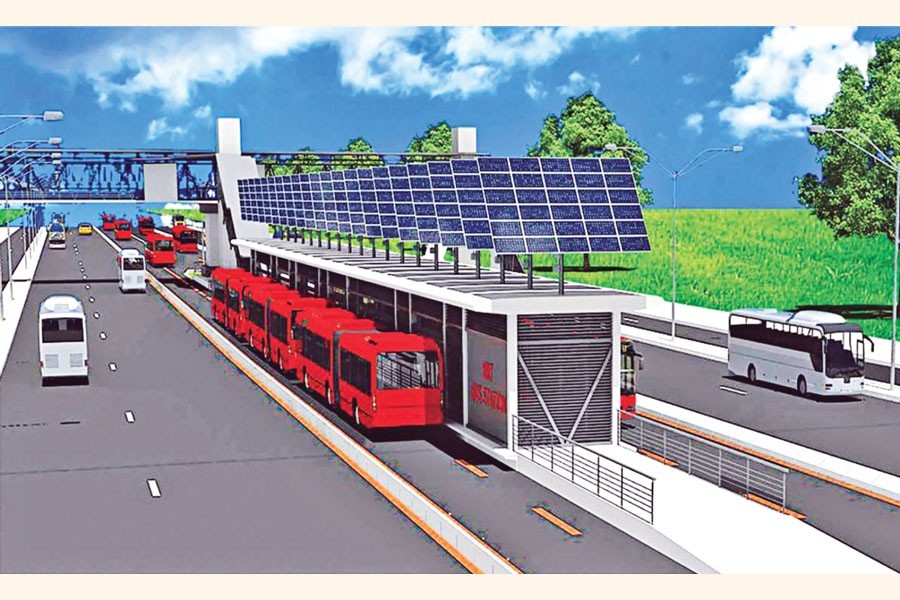The government is gradually getting less interested in developing bus rapid transit (BRT) lines due to the bitter experience it was facing while trying to develop the first bus-based mass transit line from Gazipur to Hazrat Shahjalal International Airport (HSIA).
As the first one is progressing at a very slow pace since 2016, officials said the plans for two more routes in the city have been shelved for years due to lack of interest in the higher authorities concerned.
"The minister, secretary and others concerned are not interested in BRTs any more … the experiences they were facing in developing the line might be the reason for it," said an official preferring not to be named.
In 2009, the strategic transport plan (STP) proposed three BRT lines and three Mass Rapid Transit (MRT) lines, but the plan was revised in 2015 that reduced BRTs to two and increased MRTs to five.
Although studies were completed to select the two BRT routes-one in 2016 and another in 2020 -- none of the bus-dedicated corridors could attract investment, sources said.
Initially, the first BRT line was not included in the STP, but incorporated in the RSTP with the BRT-3 (BRT North and BRT South).
After completing the studies, official sources said good progress was made in starting the BRT line 3 (South) from HSIA to Mohakhali bus stand under the financial support of the World Bank. It was necessary to facilitate the BRT North passengers to reach closer to the city from the airport.
The Dhaka Transport Coordination Authority (DTCA) also completed the feasibility study on BRT-7 proposed in the RSTP in 2020 and found a 90-kilometre north-south highway from Narayanganj to Gazipur was viable due to rapid growth of inhabitants of the township in the eastern fringe.
Sources said there is no progress in BRT-7 due to lack of interest from the authorities concerned and it has led to illegally occupying many places by different quarters.
The DTCA and Roads and Highways Department (RHD) under the Ministry of Road Transport and Bridges took the two projects worth US$ 750 million with support from the World Bank.
According to officials and experts, the BRT lines are proposed in the 25-year STP for the city's different corridors where passengers' demand is less than the other MRT corridors.
A DTCA consultant said lane capacity on a BRT corridor increased to 16,000 passengers per hour from approximately 1,200 pph. MRT is required when PPH is higher than the BRT capacity.
At present, Dhaka Mass Transit Company is working on developing four MRTs - one is under construction.
However, the feasibility study on BRT-7 predicted that the corridor would have a scope of ridership for 80,000 people per hour per direction (PPHPD) in the next 15 to 20 years.


